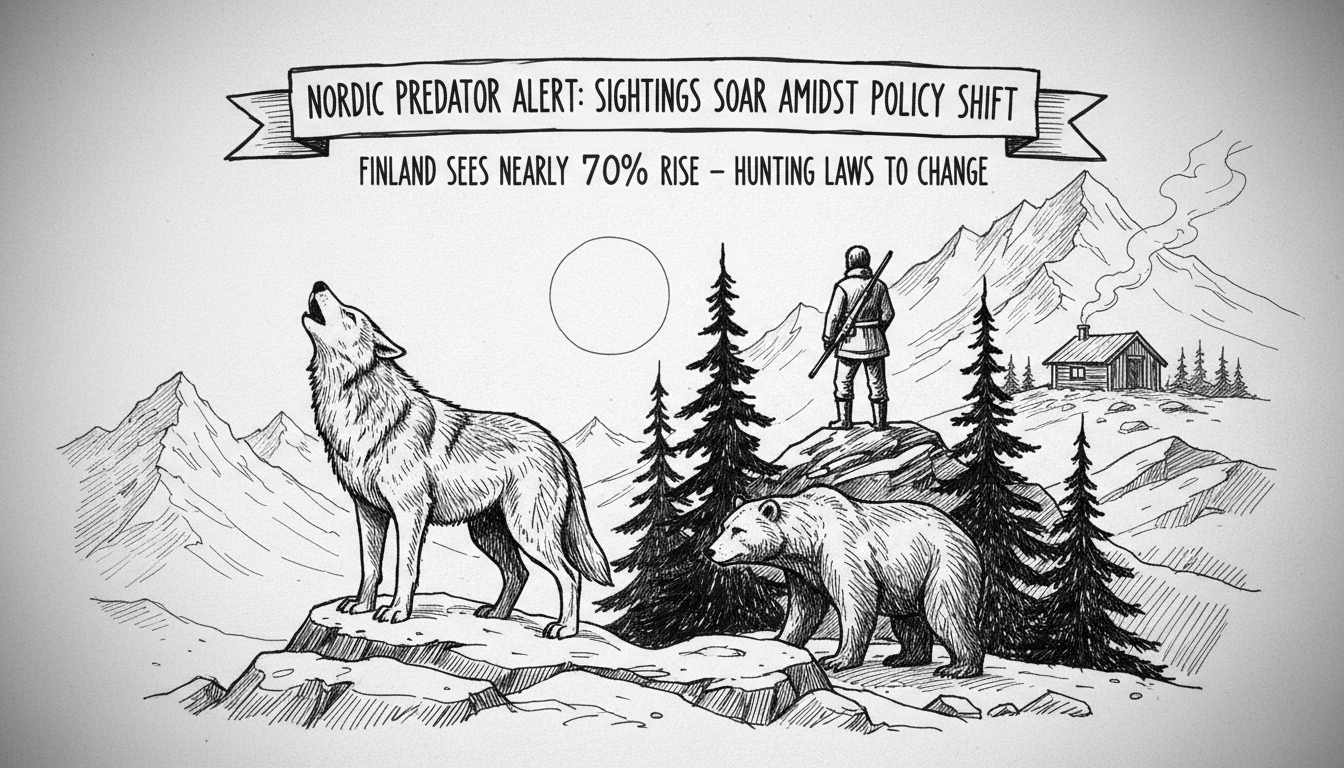Finnish authorities report a dramatic increase in large predator sightings across the country. The Finnish Wildlife Agency confirms citizens have recorded over 67,000 observations this year through their Tassu reporting system.
This represents nearly 70 percent growth compared to the same period last year. Bear and wolf sightings have shown the most notable increase, with both species seeing reported encounters nearly double from previous levels.
The surge in reported sightings doesn't necessarily indicate growing predator populations. Wildlife officials explain the increase primarily reflects greater public participation in reporting and recording observations. Citizens report predator sightings to local wildlife contact persons, who then verify and register confirmed observations in the official system.
This reporting surge comes amid significant policy changes affecting predator management. Parliament approved amendments to hunting laws earlier this year that facilitate population management hunting for bears, wolves, and lynxes. The government has proposed additional changes that would allow quota-based management hunting for wolves while eliminating their year-round protection status.
Current population estimates from Natural Resources Institute Finland indicate approximately 430 wolves resided in Finland during March. The bear population stood at around 2,300 individuals before the most recent hunting season began.
The timing of increased public reporting alongside policy changes raises important questions about human-wildlife coexistence. Rural communities have long expressed concerns about predator impacts on livestock and reindeer herds. Meanwhile, conservation groups emphasize the ecological importance of these apex predators.
International readers should understand Finland's unique position in large predator conservation. The country maintains viable populations of all four large carnivores found in Europe while balancing rural livelihoods. This makes Finnish wildlife management decisions particularly significant for broader European conservation strategies.
What explains the dramatic increase in public reporting? Improved digital tools like the Tassu system likely play a role, making it easier for citizens to document encounters. Growing public awareness about wildlife and changing attitudes toward predators may also contribute to increased reporting.
The policy changes represent a clear shift toward more active predator management. The proposed elimination of year-round wolf protection marks a substantial departure from previous conservation approaches. These developments will undoubtedly shape human-predator relationships in Finnish forests for years to come.
As Finland navigates these complex wildlife management decisions, the increased public engagement through sighting reports provides valuable data. However, it also highlights growing public interest and potential polarization around predator management policies that affect both rural communities and national conservation goals.

